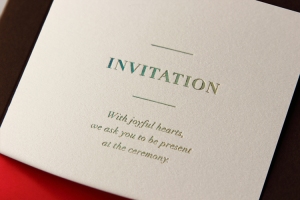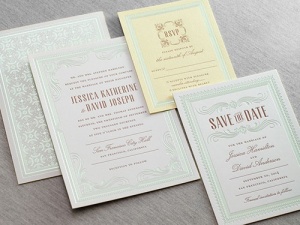STEP 7
Wedding Invitation “Voulik”
Then:
Upon finalising the dates of the wedding ceremonies, utmost care was taken and special attention was given to inviting close relatives in person, going from house to house and this form of invitation is called ‘voulik’. It used to be a verbal invitation. The bridegroom and a near relative of the bride alongwith two elderly men of either party would go to issue the ‘voulik’ by giving details of the ceremonies like time of ros, resper nuptials, jevan wedding banquet, etc. ‘First’ invitation was made to the parish priest, then the gurkar (head of the Christian community). Then invitations were exchanged between the bride and the groom’s family. First the bridegroom’s father and some relatives went to the bride’s place for inviting the family to the wedding. Then the father of the bride with some relatives went to the bridegroom’s place for extending the invitation.

Certain rules had to be observed when going for the voulik. Upon reaching the relatives house, they had to stand outside the main door, greet the owner, enquire about their health and then reveal the purpose of their visit. He would say “Havn voulik sangonk ailam” – I have come to invite you for the wedding. At once the master of the house would welcome them saying ‘dev borem korum, udak ailem’ – God bless you, please, accept this water. The invitation had to be announced in a particular manner lest it be taken as an insult. If any invitees were not present at their home at the time of the visit ‘pan-pod’ was left at the entrance of the house to indicate the visit. This system of invitation may be still be in practise in rural remote villages.
Now:

Personal invitations ‘voulik’ are still made alongwith the ‘printed invitation’, but the bride and the groom’s family go separately for the ‘voulik’, each inviting their own relatives. Some rules though are customary to be followed.
The first invitation is a symbolic invitation to “The Holy Family” Jesus, Mary & Joseph to seek blessings on the bridal couple and the marriage ceremonies. So an invitation card is placed at the altar at home. This may have been done in olden days also but have not found any mention of this.
The next invite goes to the bride’s family by the bridegroom’s family and vice-versa. Then the elders of the family are to be invited in person, followed by other relatives and friends according to time and convenience. Invitations are also sent using postal, courier, electronic services and social media, followed-up by a telephone call if necessary.
 Printed invitation cards, Save the date, RSVPs, announcements on social media, etc. have become the norm. A wedding invite should be kept as simple as possible but as it provides a glimpse and sets the tone of the events leading to the wedding, the style and contents require some thoughtful planning as it is an important medium in announcing the ‘good news’ to family and friends.
Printed invitation cards, Save the date, RSVPs, announcements on social media, etc. have become the norm. A wedding invite should be kept as simple as possible but as it provides a glimpse and sets the tone of the events leading to the wedding, the style and contents require some thoughtful planning as it is an important medium in announcing the ‘good news’ to family and friends.
Tips to be followed so that no information is omitted, is to ensure ‘who, what, when, where’ details are provided on the card i.e. who is getting married, date and venue is important to be on the invite. Any other information should be on separate cards or can be directed to the wedding website if there is one or by word of mouth. It is also important to add the names of who is hosting the wedding as the wording on the invite would differ if the parents are hosting, bridal couple is hosting or both parents and couple are hosting.
A typical timeline for wedding invitations would be :-
- Save the Date invites go out 6 to 8 months before the wedding
- Order the wedding invites 6 to 8 months prior to the wedding
- Invites are sent 6 to 8 weeks before the wedding
- Invites to a destination wedding, 3 to 4 months before the wedding
- RSVP requests 2 to 3 weeks before the wedding
- Wedding website details should be included on the ‘Save the Date’.
- Wedding registry details may be included on the website and not on the wedding invite. Gift-giving is a ‘blessing’ to the newly married couple to begin the new part of their lives and while it is tempting to include the gift registry with the wedding invitation, etiquette dictates otherwise.
A word on RSVPs. Guests do tend to take the RSVP request lightly. Out of courtsey to your hosts, do make it a point to reply to RSVPs in time. As soon as you know you will be attending or not attending, let the the hosts know by email or a call. A huge amount of effort and costs go into the planning of a wedding and it’s a shame for the hosts to have to pay for guests who don’t make an appearance!
Previous Post : Wedding garments & jewellery Next Post : Kazara Matov
References: Severine Silva and Stephen Fuchs & Victor D’sa, S.V.D.: The Marriage Customs of the Christians in South Canara, India
